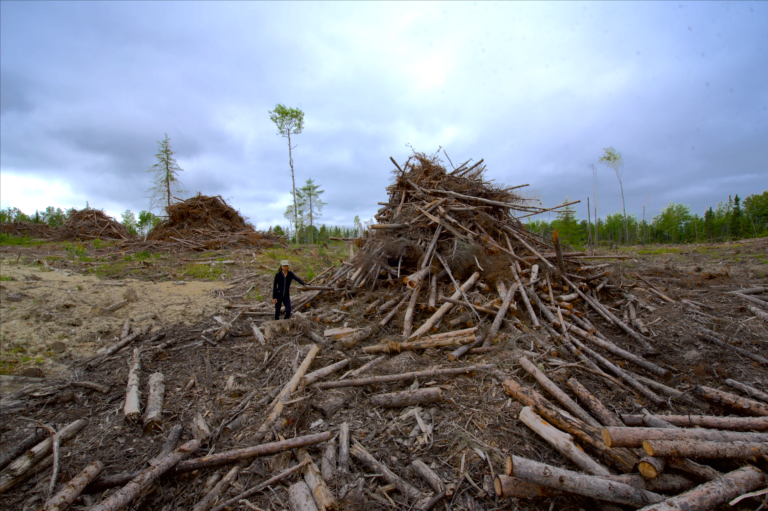THUNDER BAY — A study released Wednesday by the Wildlands League has concluded that logging roads and landings used for timber harvesting operations make a significantly under-reported contribution to deforestation in Ontario.
The Toronto-based conservation group examined 27 clearcuts across 35,000 square kilometres of forest north and west of Lake Nipigon.
The study looked at the long-term impact of roads and roadside footprints including landings, pull-offs, roadside pits and staging areas.
According to the Wildlands League, in the first three decades after clearcut logging, roads and landings typically remain barren, and are dominated by low shrubs and grass.
"Bare aggregate surfaces or track-bare features with flanking grasses to thick alder shrubs" are the common conditions, it said.
A key contributor to the problem, the study determined, is the practice of dragging an entire harvested tree including limbs and branches from its stump to the roadside.
That's where merchantable logs are stripped of branches and tops, undesired species are left behind, and tree waste accumulates in large volumes, "inhibiting the renewal of the forest," the report states.
The study calculated that the total "logging scar" footprint occupies an average of 14 per cent of an area that's been logged.
"The reality that roads and landings remain barren decades after logging–that is, de facto deforested–appears to have been largely ignored in forest management planning and reporting," the executive summary states.
The authors calculated that 21,700 hectares are deforested in Ontario each year as a result of clear-cut logging infrastructure, roughly equivalent to 40,000 football fields.
They said this is seven times greater than the reported deforestation rate by forestry for the entire country, despite the fact only 17 per cent of Canada's logging takes place in Ontario.
"Canada's logging deforestation problem has been ignored, due to an optimistic belief that all affected areas will grow back, an assumption that has long skirted systemic scrutiny," said Trevor Hesselink, the study's lead author.
The Wildlands League wants the federal government to revise its rules for monitoring deforestation to address the impact of logging roads and landings.
Hesselink also told Tbnewswatch that changes in logging practices would mitigate future damage.
Forestry companies, he said, could do more processing of merchantable trees within the clear-cut rather than at roadside.
They could also tear up the landings once they are no longer required, "de-compacting" them with equipment to prepare them for planting seedlings.
"As a former tree-planter myself, it's not the kind of surface you love, but it can be prepped" better, Hesselink said.
He added that there's been a tendency until now for everyone to focus on what's happening within clear-cuts themselves.
"We really are eager for good renewal, and the roads that we travel to get there aren't always first and foremost in our minds."
